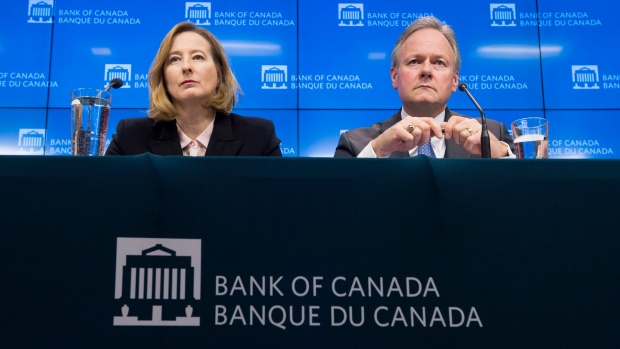Jan 17, 2018
Lang: Economy may be stronger than ever, so why aren't rates rising faster?
By Amanda Lang

For a self-professed data-driven central bank, this rate hike was an easy call.
The news on the Canadian economy has been good — and new numbers from Canada's central bank show it's only getting stronger.
But the Bank of Canada can't ignore ongoing NAFTA negotiations as a key risk to the economy. While it isn't trying to read the tea leaves on what a failure of the trade deal would mean exactly, the central bank is starting to take the pulse of Canadian business and international investors — and the news isn't great. And once the bank factors in even a few potential downside implications, it may take some of the pressure off Governor Stephen Poloz to raise rates again in the near term.
One outcome of uncertainty around NAFTA is decreased investment in Canada, which the bank says could see a two per cent reduction by the end of 2019 — an even steeper drop than it forecast in October — and translating into a 0.3 per cent hit to GDP. Those downside risks are playing off against a potential boost to growth and exports from U.S. tax changes, which the bank expects could increase Canadian exports one per cent through the end of 2019.
In other words, our largest trading partner remains a key factor — for better or worse — in how the Canadian economy will fare.
- Personal Investor: Brighter days ahead for savers
- Pattie Lovett-Reid: Who wins and who loses with a BoC rate hike
- Bank of Canada raises key interest rate to 1.25%, highest since 2009
RELATED
But leaving aside NAFTA woes, the news at home is almost entirely good. In fact, buried in the bank’s monetary policy report is a note that new revisions suggest that industrial capacity is actually higher than previously thought — in other words, the Canadian economy may actually have higher potential than previously believed, raising the bar on what growth can be. That would also take some of the pressure off to raise rates — at least where inflation is concerned, since it implies we have raised the bar on what economists consider “full capacity”.
Although some observers will remain critical of the bank's slow pace to return rates closer to what it considers “neutral” - or three per cent - there are other indications that previous hikes are having some effect.
Growth in household credit slowed in the second half of 2017, likely due in part to two interest rate hikes last year that put new pressure on borrowers. That sensitivity on the part of consumers to higher rates is something the bank says it is watching closely. On the one hand, overly indebted consumers could slam the brakes on consumer spending if their debt becomes difficult to manage. But there is also a possibility of less sensitivity, according to the bank, which could produce some upside surprise to spending.
The bank's third rate hike in the past year comes after a string of strong data points for the economy here. From increased business confidence and investment plans, to falling unemployment, the case for a January hike was clear.
And while the bank notes that it, like other major central banks globally, remains generally on a path to "normalize" rates, it seems equally clear that the pace of additional hikes beyond this one is murky at best.